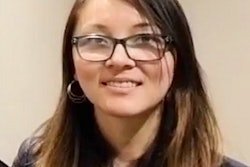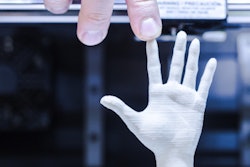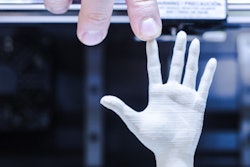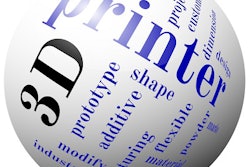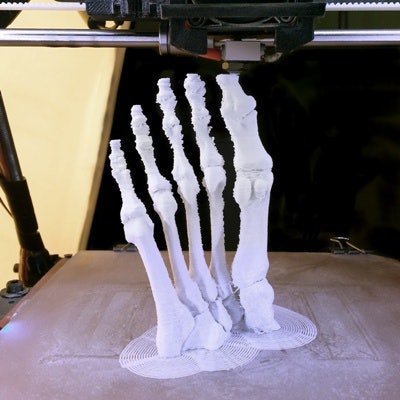
Multidisciplinary collaboration is becoming increasingly critical as the clinical use of 3D printing progresses. The upcoming 3DHeals 2018 conference in San Francisco offers an outlet for all those interested in the burgeoning technology to discuss the most recent developments with leaders in the field.
This second iteration of the 3DHeals meeting will take place at Bespoke in Westfield San Francisco Centre on April 20-21. It will feature a full day of hands-on 3D printing workshops, followed by presentations concerning the latest advancements in 3D printing as it relates to healthcare, dentistry, and other emerging technologies.
As far as the focus of the conference, this year's theme, "join the genius tribe," is a call to innovators, clinicians, and entrepreneurs to connect and work together as early adopters of the integration of 3D printing into healthcare, 3DHeals founder and CEO Dr. Jenny Chen told AuntMinnie.com. Chen is a neuroradiologist and adjunct clinical instructor of radiology at Stanford University.
"Our goal is to accelerate the adoption of new technology into healthcare by learning and communicating, and through potential collaboration," she said. "We were all formerly on lonely islands, but this annual conference is providing a platform for people to congregate and find each other."
Increasing the scale
 Neuroradiologist Dr. Jenny Chen.
Neuroradiologist Dr. Jenny Chen.
At the annual meeting this year, radiologists and other attendees aspiring to optimize their role in 3D printing will have the opportunity not only to learn about the discipline but also to partner with others in a concerted effort to improve aspects of patient care by uniting 3D printing and medicine.
The conference will dedicate one day to hands-on activities, covering concepts such as bioprinting, the use of open-source software for 3D printing in medicine, and regulatory compliance and liability for 3D-printed medical devices. The second day will focus on the discussion of new research and ideas through the traditional format of talks and panels. Presentations on 3D printing in medicine will include hospital experiences, the results of recent clinical trials, and cases involving orthotics and prosthetics.
Expanding its breadth this year, 3DHeals 2018 will welcome a number of attendees and speakers from countries across the globe, including Germany, Singapore, France, Brazil, and South Korea.
"We decided to increase the scale of these events in order to help speed up the adoption of 3D printing technology [in healthcare]," Chen said.
In addition, organizers of the event have opened up a pitch competition for 3D printing start-ups, during which select companies will be able to showcase their work and receive direct feedback from a panel of investors regarding next-step strategies and potential partnerships.
"We're moving toward discovering start-ups in the field," Chen said. "We want to increase visibility for these garage ventures and give them a stage, especially if they are truly innovative."
Fundamental questions
Among the conference's 39 scheduled speakers are a variety of health practitioners, scientists, lawyers, and business executives who have championed the integration of 3D printing into healthcare:
- Dr. Paul D'Urso, PhD, is a neurosurgeon and a pioneer in biomodeling, which involves manufacturing plastic replicas of anatomical structures based on medical images. He is the founding CEO of Anatomics, a collection of medical software and device companies in Melbourne, Australia.
- Dr. Sanjay Prabhu is a professor of radiology at Harvard Medical School, founding director of the Advanced Image Analysis Lab at Boston Children's Hospital, and co-director of the hospital's SimPeds 3D printing service.
- Dr. Jesse Courtier is a pediatric radiologist at the University of California, San Francisco (UCSF) Benioff Children's Hospital and the founder of HoloSurg3D. His team developed proprietary Radiology with Holographic Augmentation (RadHA) software that, in conjunction with the Microsoft HoloLens wireless headset, displays CT scans and MR images in 3D on any real-world background.
- Melanie Matheu, PhD, co-founded 3D printing company Prellis Biologics, which employs laser-based 3D printing to create vascularized tissue and organ models for transplantation.
The event will also include guests who have personally experienced the clinical benefits of healthcare 3D printing as patients, according to Chen. One such attendee is a woman from Minnesota who recently underwent sternal replacement and now has an individually tailored, titanium 3D-printed sternum.
The 3DHeals conference also aims to focus on the type of fundamental questions that are often overlooked in medical specialty conferences, she said.
"Take bioprinting, for example," she said. "What materials are currently available? How are we addressing concerns? How can we use this technology without endangering patients? What are the regulatory [laws and policies] involved?"
Radiology as the vanguard
Answering technical and logistical questions for the medical application of 3D printing may be especially fitting this year with the debut of an "emerging technology" track. The new track will include topics such as robotics and 3D printing, as well as using artificial intelligence (AI) to improve the efficiency of segmenting medical images before they are printed.
"3D printing is just one branch of the digital revolution," Chen said. "You can branch out the digital revolution to include AI, virtual reality, augmented reality, etc., and if you know these technologies well, you can combine them together. The potential synthesis could be huge."
There is a variety of more basic 3D printing research topics on the agenda, too, from extending the lifetime of 3D-printed metal implants to making 3D-printed models using biocompatible polymers.
Several groups are working on improving the manufacturing process and design of hip implants so that they last a lifetime, rather than for 10 to 15 years as current models do, she said. Another hot topic is the study of new polymers, such as silicone, that are biocompatible with a variety of existing medical devices.
"We already have access to polymer-based surgical guides [that clinicians can use] intraoperatively," she said. "With new 3D printing [technology], we could create structures we've never made before and that are customized to individual patients."
Radiology has long been innovating in front of the path, and radiologists are positioned to play a major role in merging specific advanced visualization technologies with medicine, she noted.
"I anticipate more radiologists to have a part in advancing these emerging technologies than physicians in other specialties," she said. "For radiologists who want to continue innovating and exploring our potential, this conference is perfect."
Interested parties can find out more or register for the conference at 3DHeals2018.com.




